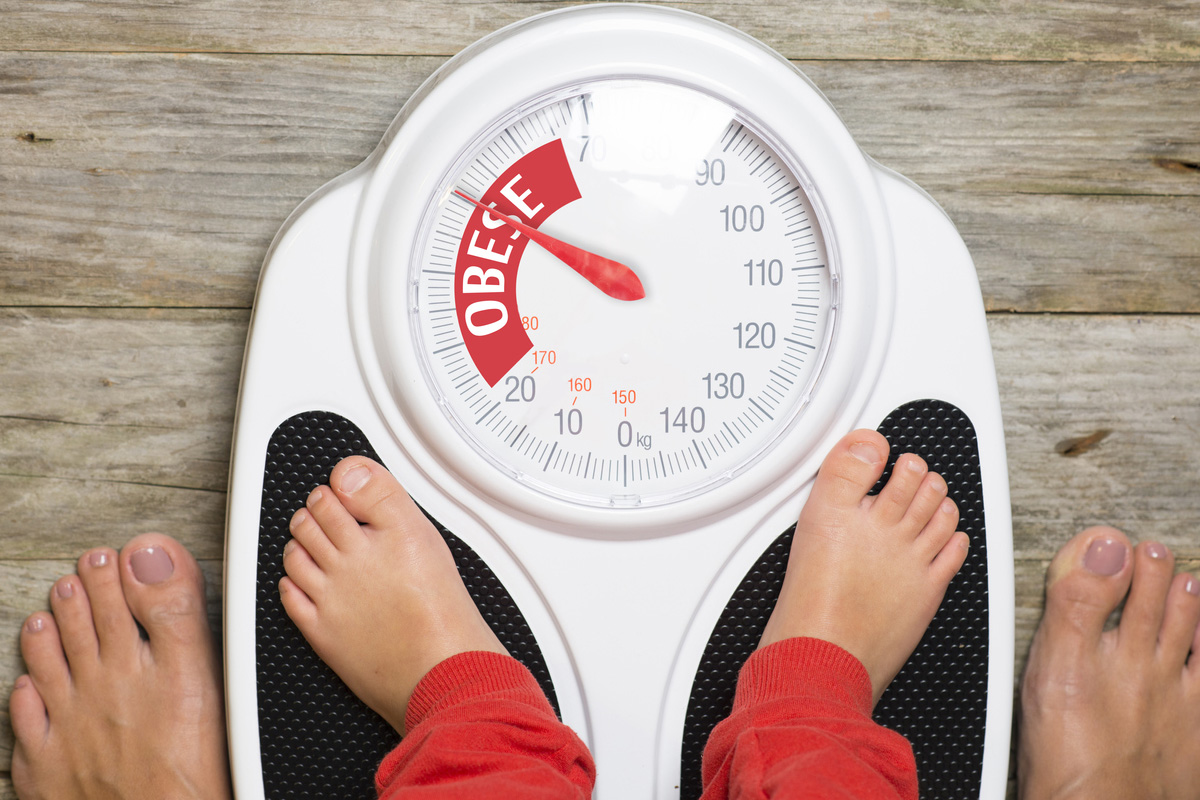Empowering parents, shaping policies, and promoting healthy lifestyles to combat the alarming surge in childhood obesity are key strategies.

Doctors advice equal importance to be given to a balanced diet, exercise, and limited screen time. (Wikimedia Commons)
The corridors of a bustling clinic in Bengaluru’s Jayanagar echoed with the soft murmur of worried parents, their anxious glances revealing the heaviness they carried in their hearts. Among them stood 39-year-old Soumya (name changed), a mother on a mission — her determination a stark contrast to the uncertainty etched on her young son’s face.
As she clutched his medical file, Soumya recounted her uphill struggle to rein in his weight. Her son’s journey was emblematic of a larger crisis that India grapples with — an alarming epidemic of childhood obesity.
With a staggering 1.8 crore obese children in 2020, India stood as the world’s second highest in this disturbing ranking.

Childhood obesity and other related non-communicable diseases have grown rampant in India. (Wikimedia Commons)
Dr Sanjay G, a paediatrician from Bengaluru, emphasises the importance of early identification.
“We’re witnessing the emergence of an insidious foe that’s stealthily robbing our children of their health and vitality,” he warns.
But how do we identify this silent menace? The answer lies beyond the numbers on a scale.
“Obesity isn’t just a matter of kilograms; it’s about understanding a child’s unique growth pattern and health markers,” Dr Sanjay explains to South First.
On an average, doctors in urban settings claim to be seeing at least two to three cases a week where parents are coming in with their children, with obesity-related concerns.
Dr Vijay Kumar Challuri, a paediatrician at ESI Hospital in Karimnagar district, told to South First that identifying obesity in children requires a combination of measurements, growth patterns, and awareness of potential signs.
“While a simple scale reading might indicate weight status, it’s essential to consider a broader perspective that includes factors such as growth rate, body composition, and overall health,” he adds.
Dr Challuri explains that Body Mass Index (BMI) is a commonly used tool to assess weight status in relation to height. BMI-for-age growth charts, specifically designed for children and adolescents, are used to assess their BMI percentile.
“In children aged between 8 and 15 years, a BMI percentile greater than 85 percent suggests overweight, and a percentile greater than 90 percent suggests obesity,” states Dr Challuri.
Doctors explain that it is important to track your child’s growth trajectory over time. If there is a rapid or excessive weight gain when compared to their growth curve, then that may be an indication of a potential weight issue.
However, doctors argue that obesity isn’t solely about weight; it’s about the distribution of fat. A child with excess body fat, particularly around the abdomen, might be at a higher risk of health problems. Visual observation can help in assessing body composition changes.
Parents should also observe the physical appearance of the child and if the clothes they usually wear are fitting more tightly, struggling with tasks that they once would do at ease, show difficulty in participating in physical activities, then it is a sign that they should be brought to the doctor.
Doctors say that, primarily, genetics plays a role in predisposition to obesity. “If you have a family history of obesity, your child might be at a higher risk,” says Dr Challuri.
While hereditary does play a role, there have been several studies and anecdotal evidences to prove that the rise in childhood obesity is linked to the alarming surge in consumption of ultra-processed foods.

Junk food is normally very high in fats, sugars, and salt, and should be avoided, say nutrition experts. (iStock)
Speaking to South First, Dr Arun Gupta, Senior Paediatrician and Convener of Nutrition Advocacy in Public Interest (NAPi), says, “A major reason for obesity in this age group is increasing consumption of an unhealthy diet — call it junk food or beverages or ultra-processed food products. Aggressive and pervasive marketing and advertising is driving it.”
NAPi is a national think-tank on nutrition.
The experts argue that these highly-engineered products — rich in unhealthy fats, sugars, and additives — have infiltrated the diets of young ones, contributing to a concerning trend in weight gain and health issues. Recent studies underscore the association between increased intake of ultra-processed foods and a higher risk of obesity in children.
“The steady influx of sugary drinks, packaged snacks, and fast food destabilises the delicate balance of our children’s metabolism,” Dr Arun warns.
The insidious additives in these products, loaded with refined sugars, unhealthy fats, and excessive salt, become the building blocks of an unhealthy body, he argues.
Experts highlight that these products often lack essential nutrients, while packing a caloric punch. Such a diet not only fuels weight gain, but also sets the stage for long-term health problems like diabetes and heart disease. These ultra-processed foods have become a staple in many households, overshadowing fresh, whole foods.
Other factors for childhood obesity are lack of exercise and excessive screen time. Explaining further, Chief Neonatologist and Pediatrician at People Tree Hospital in Bengaluru, Dr Ranjan Kumar Pejaver, says, “Consumption of junk food with no adequate exercise, along with excessive screen time, is what is leading to obesity in adolescents these days.”
Adding to this, Dr Selvan R, paediatrician and researcher from Tamil Nadu, says, “While children while away the time on screens when at home, at school, the number of physical education (PE) periods across all syllabi have reduced.”
Dr Selvan calls it unfortunate that the number of PE periods has reduced to two or three per week, even after the CBSE had advised, in 2018, that Classes 1 to 11 must compulsorily have at least one period for PE. “They don’t have enough time to spend interacting with parents and friends. Their free time is spent on screens,” he says.
Dr Selvan explains that irregular sleep also disturbs their Circadian Rhythm, and their sleep cycle is disturbed. This lack of adequate sleep can lead to a hyperinsulinemic state, leading to weight gain. Meanwhile, persistent stressful environment due to academic pressure and special classes, coupled with parents being overly demanding when it comes good performance in every area, makes them emotionally weak as well.
This emotional imbalance can lead to overeating and as the taste buds are now used to ultra-processed foods and highly sweet, high-carb food, that is what they desire. This can lead to quick gaining of weight in children.
The increasing prevalence of childhood weight gain has raised significant concerns among medical professionals and parents alike. Speaking to South First, Dharitri MS, a software engineer by profession and a mother of a 11-year-old, says, “My son gained 10 kg in the last one year. Covid-19-related lockdown and online classes changed his lifestyle, eating habits, and even sleep cycle completely. He’s now 75 kg.”
Excessive weight gain can lead to a range of problems that extend beyond the physical realm, say doctors. One of the primary concerns is the elevated risk of chronic health conditions. Dr Selvan says, “Children who gain excessive weight are at higher risk of developing type 2 diabetes. The body’s ability to regulate blood sugar becomes compromised, setting the stage for lifelong health battles.”
Meanwhile, cardiovascular issues are also a prominent worry. The extra weight borne by a child’s joints can lead to orthopaedic issues, including joint pain, discomfort, and even long-term conditions, like arthritis.
Then there is also the psychological well-being of the child. Rashmi G Nagendra, a teacher by profession and a mother of a 15-year-old girl, says that her daughter is going through severe emotional ups and down. On the one hand she is trying to handle puberty-related issues, while on the other hand, she is overweight by almost 20 kg. This has led to social stigma, teasing, and low self-esteem.
She says, “People in my apartment, relatives, friends…everyone comments on her weight. I know this is a problem and needs to be sorted, but I am a helpless mother. She is glued to the screen, eats lot of sweets, and refuses to exercise. I even did a test and thankfully all her blood markers are normal. But I will have to consult a doctor,” she laments.
Being overweight can also affect a teenage girl’s menstrual cycle and eventually lead to fertility issues.
Addressing this crisis demands a two-fold approach.
Firstly, parents and caregivers must be empowered with information to make healthier food choices for their children, says Dr Arun.
“Parents can provide important information to the children to prevent obesity. This can be done without offending them. For example, sharing information of sugar content of common items. Ask them to read the labels. Parents can avoid buying products that have more than five ingredients or those being advertised,” he explains.
Secondly, according to Dr Sanjay, easily understandable front-of-pack warning labels must be adopted on food products. It has been proven in several counties that adoption of these nutrition warnings can help combat obesity. Making front-of-pack warning labels are mandatory. This allows for the regulation of unhealthy products that play a role in noncommunicable disease development. Also it is important to have a warning for sweeteners, alongside salt and saturated fat.
Renowned nutritionist Swetha Adarsh says that adolescence marks a critical phase of growth and development, characterised by a range of physical and psychological changes. This period presents unique challenges in weight management.
 She says that the advantages of weight management during adolescence are rooted in fostering healthy habits that can carry into adulthood.
She says that the advantages of weight management during adolescence are rooted in fostering healthy habits that can carry into adulthood.
“Adolescents’ bodies are undergoing rapid changes, making a balanced diet crucial to meet their growing energy needs,” she says, adding that a well-rounded diet provides essential nutrients for bone development, brain function, and overall health.
However, Swetha says that the journey is not without challenges. Diets lacking in balance and those drastically restricting calories are often impractical and in effective for teenagers.
She says, “Low-calorie diets can disrupt metabolism, prompting the body to store more fat and slow down the rate of weight loss. Crash diets also risk compromising growth and development, particularly for adolescents still in puberty,” she adds.
Swetha says that this age group is particularly vulnerable to the allure of fad diets and unrealtistic weight-loss expectations.
“To strike a balance, adolescents are advised to opt for gradual weight loss, aiming for one to two kg per month. A modest caloric reduction, coupled with regular physical activity, can lead to sustainable weight management without compromising growth and development,” says Swetha.
Swetha adds that healthy weight gain and accumulating body fat are completely different things. Body fat is collected when one eats food that has high sugar, carbohydrates, and trans fats, like fried foods, ice creams, bakery food, and soda.
On the other hand, eating complex carbohydrates like vegetables, grains, and proteins like lean meat, fish, and eggs can give body to a balanced nutrition, energy, and calories for weight gain.
“Healthy weight gain enables you to build muscle mass and strength, while body fat just occupies space and, if anything ,makes physical activity difficult. Also, muscle mass is dense and gives your body a lean look, while body fat makes it seem bloated,” she adds.
Swetha says that on an average, a teenager can eat up to 400 to 800 calories per day. A healthy diet includes one to two cups of fruits, two to three cups of vegetables every day. Whole grains contain healthy carbs and are rich in fibre, and also have plenty of Vitamin B and iron.
Dr Arun also agrees. He adds that in this age group, a healthy diet should include real, unprocessed or minimally processed food. All types of food groups should be consumed.
However, he says that not all processed foods are bad. “Preserved vegetables or fruits to increase shelf life is also processing. Ultra-processing is industrial formulation and real food cannot be spotted.”
He also emphasises on regular exercise, like playing at school, and avoiding excess screen time to prevent unhealthy weight gain.
While physical activity holds importance in adolescent life, doctors warn that going to the gym may not be a safe option, at least until they are 14 years old.
Several fitness centres allow children only above 14 years of age as their bodies are still developing and gym is ideal after 14 years.
They can go walking, participate in outdoor sports like basketball, volleyball, running, etc, which can help in not only learning the game but also help in keeping fit.
Doctors say that children often mimic the behaviours of adults. Engage in regular physical activity yourself and involve your child in your exercise routine. This can be as simple as going for walks, playing a sport, or cycling together.
Dr Swetha explains that choosing activities that your child enjoys will make it a fun experience too. Whether it’s dancing, swimming, playing basketball, or even jumping on a trampoline, making physical activity enjoyable will motivate them to participate.
Meanwhile, experts also recommend spending time outdoors and encouraging your child to explore nature. Activities like hiking, playing in the park, or going for a nature walk can be exciting and physically engaging.
Dr Pejaver says that physical exercises like skipping, cycling, jogging, swimming, and field games will help too.
Experts also recommend creating a reward system for achieving physical activity goals. It could be as simple as earning a sticker for every active day, leading to a small treat or privilege after collecting a certain number of stickers.
Experts, however, stress that for parents it is important to remember that the goal is not to focus solely on weight, but to foster a holistic approach to health. It’s crucial to address any concerns with sensitivity, openness, and a commitment to promoting your child’s well-being.
Dr Challuri adds, “If you suspect your child might be struggling with obesity, consult a healthcare professional for a proper evaluation and guidance on how to manage the situation effectively.”

Jul 26, 2024

Jul 26, 2024

Jul 26, 2024

Jul 26, 2024

Jul 26, 2024

Jul 26, 2024